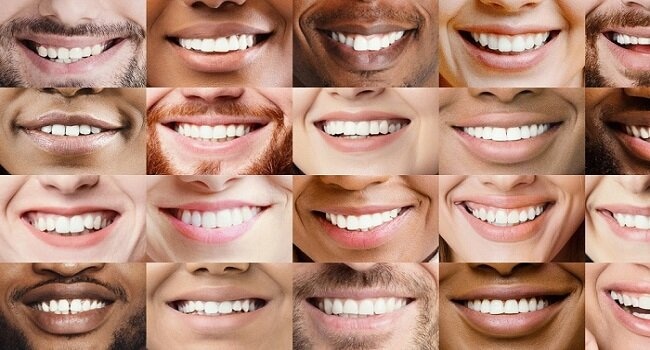A radiant smile isn’t just a reflection of confidence; it’s a powerful indicator of overall health. Yet, for millions across the globe, achieving this simple joy remains a distant dream.
Indeed, the path to optimal oral health is often riddled with obstacles, creating a stark landscape of disparities in dental care access. Understanding these challenges and implementing holistic solutions are crucial steps towards unlocking the power of beautiful and healthy smiles for everyone.
Barriers To Accessible Oral Care
The road to optimal oral health is anything but smooth. Some of the key barriers that stand in the way include:
- Dental care can be a pricey maze, with inadequate insurance coverage leaving many families grappling with insurmountable bills. Low-income individuals and communities are disproportionately burdened by this financial burden, forcing them to choose between essential oral care thanks to my family dentist and other basic necessities.
- The distribution of dental professionals often resembles a desolate landscape, with urban areas boasting an abundance while rural communities languish with limited dental services. This geographic disparity isolates populations from crucial preventive care and treatment, exacerbating existing oral health problems.
- Accessing care can be a treacherous journey for those without reliable transportation, particularly in remote areas. Elderly individuals, people with disabilities, and those living in rural communities often find themselves trapped in these transportation tunnels, unable to reach the oasis of dental care.
- Language barriers and cultural differences can create a confusing maze for some individuals, navigating a healthcare system that feels foreign and intimidating. Culturally insensitive practices and lack of adequate interpreters can leave this vulnerable population lost and hesitant to seek necessary dental care.
Solutions To Various Oral Care Accessibility Problems
Despite the formidable challenges above, various solutions are emerging to light the path towards equitable oral care. Here are some of them:
- Advocating for policy changes that expand dental insurance coverage under programs like Medicaid and Medicare can significantly reduce the financial burden for low-income individuals and families. Additionally, promoting tax incentives for dentists practicing in underserved areas can attract more professionals to these regions.
- Harnessing the power of telemedicine can bridge the geographical divide, connecting patients in remote areas with dentists virtually. Consultations, remote monitoring, and even certain procedures can be facilitated through this innovative approach, bringing care closer to those who need it most.
- Deploying mobile dental clinics help those who have very limited access to oral healthcare services. These roving clinics reach directly into underserved communities, providing essential services to populations, young kids and so on, who’d otherwise struggle to access them.
- Building bridges through culturally competent education programs is crucial. Raising awareness about oral health practices, dispelling myths, and providing culturally sensitive resources empower communities to take charge of their oral health.
- Addressing the shortage of dental professionals in underserved areas requires innovative solutions. Encouraging dental students to complete rotations in rural communities, offering loan forgiveness programs, and exploring alternative dental care models like dental hygienists providing preventive care can help alleviate this chronic issue.
Reaping The Rewards Of Collective Efforts To Address Oral Care Issues

Equitable dental care access is believed to set forward the following advantages:
- Optimal oral health isn’t just about pearly whites; it’s intricately linked to overall physical and mental well-being. Improved access to care translates to fewer dental complications, reduced pain and discomfort, and a boost in confidence and self-esteem. This in turn empowers individuals to participate more fully in their communities, pursue educational and professional opportunities, and break free from the cycle of oral health disparities.
- When oral health flourishes within a community, the ripple effects are undeniable. Reduced healthcare costs, increased productivity, and improved educational attainment contribute to a stronger local economy and a more vibrant social fabric. Plus, fostering a culture of preventive care empowers individuals to take charge of their health, leading to a domino effect of positive health outcomes across generations.
- The economic burden of untreated oral health problems is staggering, impacting healthcare systems and national productivity. By prioritizing accessible oral care, officials can free up resources for other critical healthcare needs and foster a healthier, more productive workforce. This societal transformation paves the way for a more equitable and prosperous future for all.
Championing Change Through Advocacy
Making accessible oral care a reality requires more than just innovative solutions; it demands a collective of voices advocating for change. Here’s how you can become a champion for equitable dental care:
- Share your story, educate your community about the challenges and solutions, and spark conversations about oral health disparities. Utilize social media, local media outlets, and community events to amplify your message.
- Contact your local representatives and advocate for policies that expand dental insurance coverage, increase funding for underserved communities, and support initiatives like mobile clinics and telehealth programs.
- Lend your voice and resources to organizations championing oral health equity. Volunteer your time, donate to relevant causes, and participate in advocacy campaigns.
To Conclude
Improving oral care accessibility isn’t just a healthcare pursuit; it’s a fundamental step towards achieving overall health equity. By acknowledging the complex challenges, embracing innovative solutions, and fostering a spirit of collaboration among policymakers, healthcare providers, communities, and individuals, society, as a whole, can cultivate a future where everyone has a fair shot at a healthy and glowing smile.























